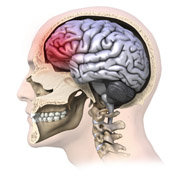Research and Innovation, UNL Office of

Center for Brain, Biology, and Behavior: Faculty Publications
Document Type
Article
Date of this Version
11-3-2023
Citation
Discover Mental Health (2023) 3: 25
https://doi.org/10.1007/s44192-023-00052-3
Published by Springer
Abstract
Background
Conduct disorder (CD) involves a group of behavioral and emotional problems that usually begins during childhood or adolescence. Structural brain alterations have been observed in CD, including the amygdala, insula, ventrolateral and medial prefrontal cortex, anterior cingulate cortex, and fusiform gyrus. The current study developed a multivariate generalized linear model (GLM) to differentiate adolescents with CD from typically developing (TD) adolescents in terms of grey matter volume (GMV).
Methods
The whole‐brain structural MRI data were collected from 96 adolescents with CD (mean age = 16.188 ± 1.259 years; mean IQ = 104.292 ± 8.107 ; 63 males) and 90 TD individuals (mean age = 15.956 ± 1.506 years; mean IQ = 106.622 ± 9.076 ; 59 males) matched on age, IQ, and sex. Region-wise GMV was extracted following whole-brain parcellation into 68 cortical and 14 subcortical regions for each participant. A multivariate GLM was developed to predict the GMV of the pre-hypothesized regions-of-interest (ROIs) based on CD diagnosis, with intracranial volume, age, sex, and IQ serving as the covariate.
Results
A diagnosis of CD was a significant predictor for GMV in the right pars orbitalis, right insula, right superior temporal gyrus, left fusiform gyrus, and left amygdala (F(1, 180) = 5.460–10.317, p < 0.05, partial eta squared = 0.029–0.054). The CD participants had smaller GMV in these regions than the TD participants ( MCD–MTD = [− 614.898] mm3–[− 53.461] mm3).
Conclusions
Altered GMV within specific regions may serve as a biomarker for the development of CD in adolescents. Clinical work can potentially target these biomarkers to treat adolescents with CD.
Included in
Behavior and Behavior Mechanisms Commons, Nervous System Commons, Other Analytical, Diagnostic and Therapeutic Techniques and Equipment Commons, Other Neuroscience and Neurobiology Commons, Other Psychiatry and Psychology Commons, Rehabilitation and Therapy Commons, Sports Sciences Commons


Comments
Copyright 2023, the authors. Open access material
License: CC BY 4.0